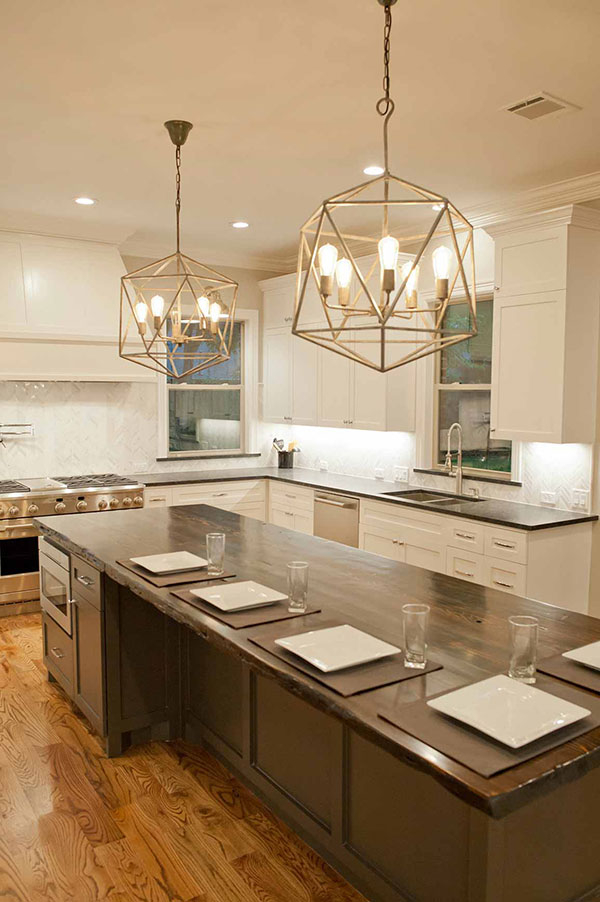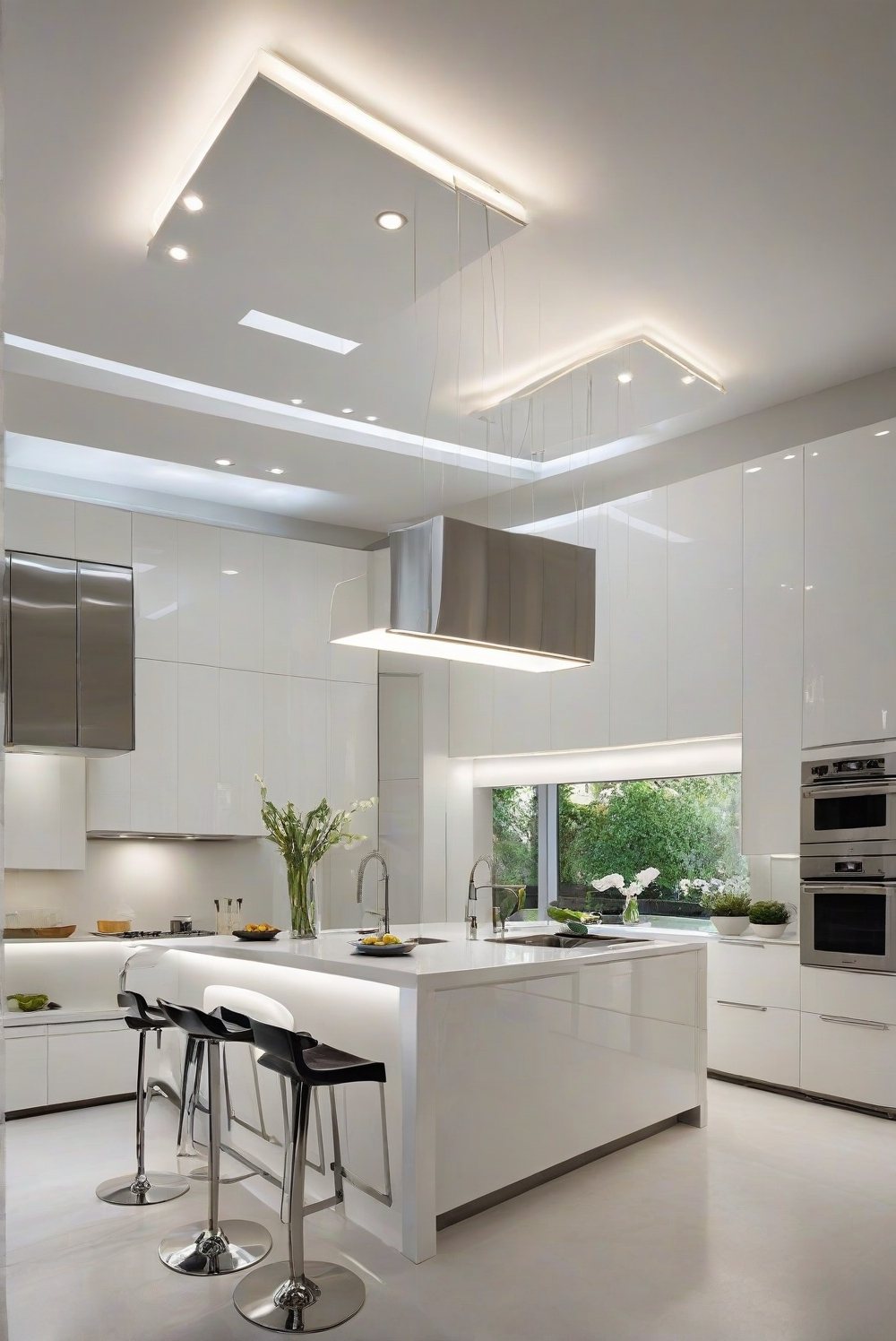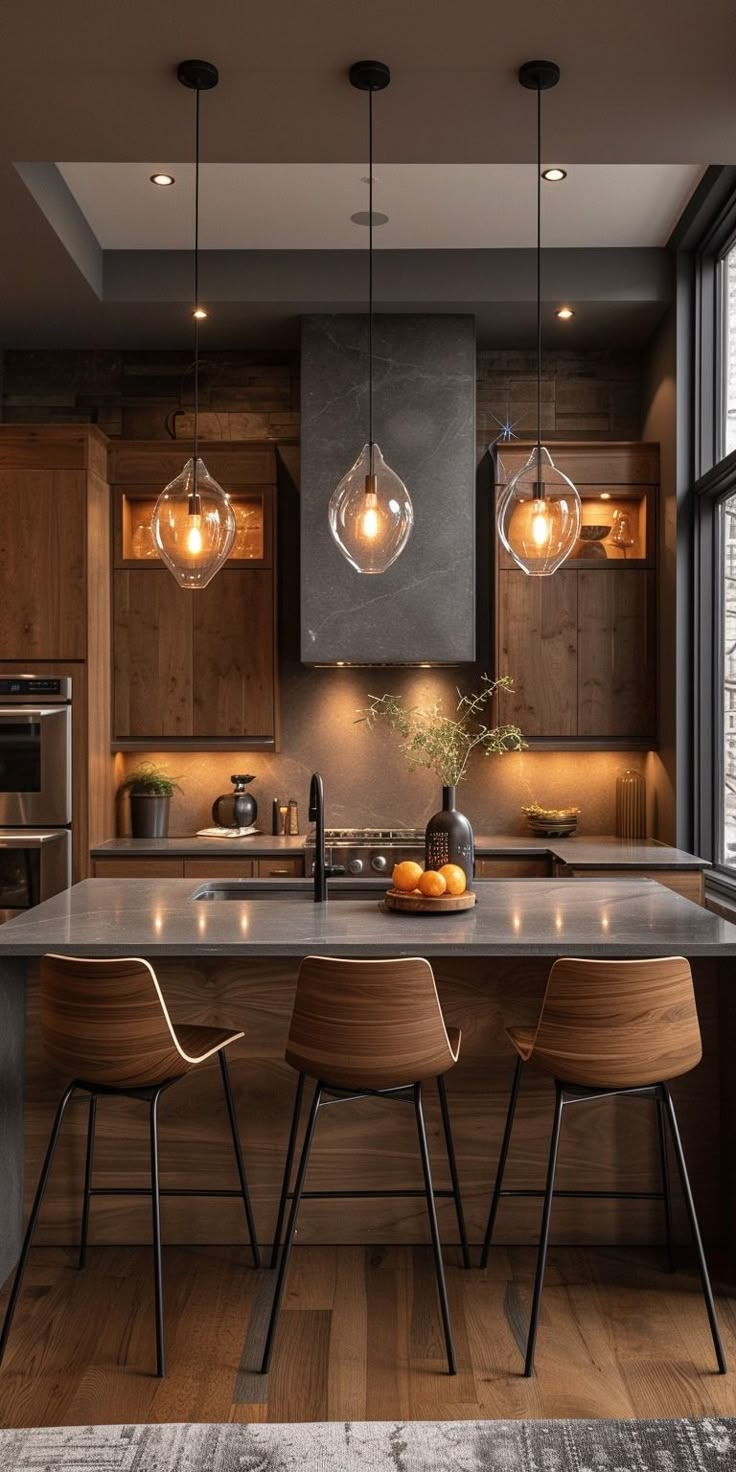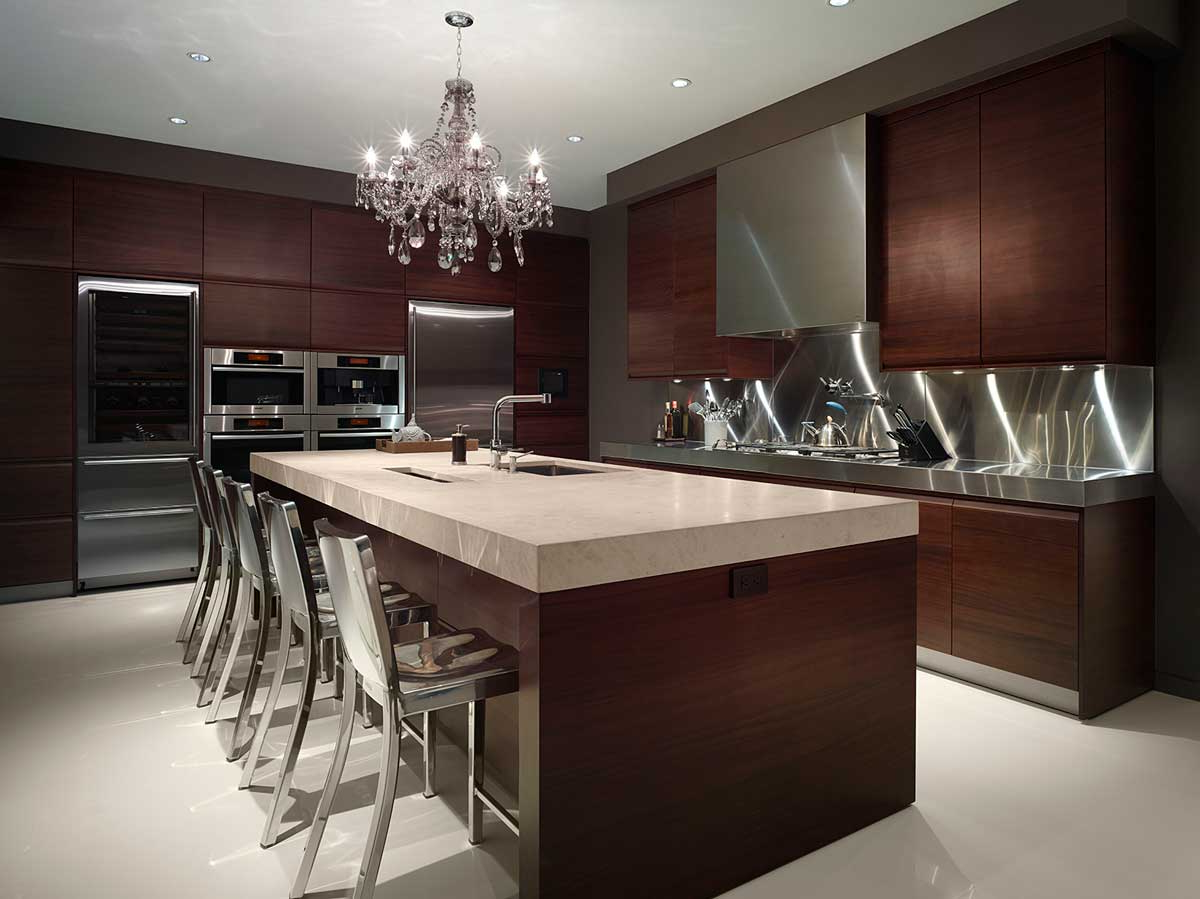The kitchen. It’s more than just a place to whip up a meal; it’s the heart of the home, a gathering spot, and often, the stage for our most creative culinary endeavors. And what plays a more crucial role in setting the scene than light? Getting your kitchen illumination just right can transform a purely functional space into a warm, inviting, and inspiring environment. It’s about more than just seeing; it’s about feeling. Think about it: a brightly lit kitchen for prepping a feast versus a softly lit one for a late-night snack. The vibe changes completely, doesn’t it?
When we talk about modern kitchen design, we’re often focused on sleek cabinets, innovative appliances, and stylish countertops. But have you ever stopped to consider the power of lighting? It’s the unsung hero, capable of enhancing both the aesthetics and the usability of your culinary hub. Proper lighting can make a small kitchen feel more spacious, highlight stunning architectural features, and most importantly, create the perfect atmosphere for whatever you’re doing. We’re going to dive deep into the world of modern kitchen lighting, breaking down the essential elements that come together to create a truly captivating space. Forget harsh, utilitarian glare; we’re aiming for a sophisticated blend of function and feeling.
Layering Your Light: The Foundation of Great Design
The secret to exceptional kitchen lighting, especially in a modern setting, lies in layering. This isn’t about simply having one big light in the middle of the ceiling. Instead, it’s about combining different types of light to serve various purposes and moods. Think of it like building a delicious meal – you need a base, some flavorful additions, and a touch of garnish. We typically categorize these layers into three main types:
- Ambient Lighting: This is your general, overall illumination. It’s the foundational light that fills the room and allows you to move around safely. In a modern kitchen, this might come from recessed ceiling lights, flush mounts, or even cove lighting cleverly hidden in cabinetry or ceiling details. The goal here is even, comfortable light that sets the baseline for the room’s brightness.
- Task Lighting: This is crucial for functionality. It’s focused light directed precisely where you need it most – think chopping vegetables, reading recipes, or cleaning up. Under-cabinet lighting is a modern kitchen staple, banishing shadowy countertops. Pendant lights over an island or sink also serve a dual purpose, offering both task illumination and decorative flair. Consider dimmable options for versatility.
- Accent Lighting: This layer is all about drama and highlighting specific features. Want to showcase that beautiful backsplash, a collection of artful cookware, or the texture of your cabinetry. Accent lights, often in the form of spotlights or small directional fixtures, draw the eye and add depth and visual interest. This is where you can really inject personality and sophistication into your kitchen’s design.
Task Lighting: Illuminating Your Culinary Work Zone
Let’s delve a bit deeper into task lighting because, honestly, it’s where the magic happens for cooks and bakers. Nothing kills the culinary vibe faster than struggling to see what you’re doing. Modern kitchens often feature islands or peninsulas that serve as primary prep areas. Placing pendant lights directly above these zones provides excellent focused light without being overly harsh. The spacing and height are key here; you want them to illuminate the surface effectively without creating glare or obstructing views across the kitchen.
Under-cabinet lighting is another game-changer. These slim fixtures, often LED strips, are mounted beneath your upper cabinets and cast light directly onto your countertops. This is incredibly effective for eliminating shadows cast by the cabinets themselves, making your prep work safer and more enjoyable. Many under-cabinet options are dimmable, allowing you to adjust the intensity based on your needs – brighter for intense chopping, softer for a more relaxed ambiance.
Don’t forget the sink area. A well-placed recessed light or a small pendant above the sink ensures you can see clearly when washing dishes or rinsing produce. Proper task lighting isn’t just about utility; it makes your kitchen a more efficient and pleasant place to be.
Ambient Lighting: Setting the Overall Mood
Ambient lighting is the backbone of your kitchen’s atmosphere. It’s the gentle, pervasive glow that makes the space feel welcoming and complete. In modern kitchens, recessed ceiling lights, also known as can lights or pot lights, are a popular choice. They offer a clean, minimalist look and can be strategically placed to provide even illumination across the entire room. When selecting recessed lights, consider the beam angle and the color temperature of the bulb. A wider beam angle will spread light more broadly, while a narrower one can be more focused. For a modern aesthetic, aim for a neutral to warm white color temperature (around 2700K to 3000K) to avoid a sterile, blueish cast.
Another sophisticated option for ambient light is cove lighting. This involves installing light fixtures within a concealed recess, often along the top of cabinets or the edge of a ceiling. The light then bounces off the ceiling and walls, creating a soft, diffused, and indirect illumination. It’s a subtle yet highly effective way to add a layer of warmth and depth without any visible fixtures, perfectly suiting the sleek lines of modern design.
Flush mount or semi-flush mount fixtures can also work well, especially in kitchens with lower ceilings. Look for designs that complement your modern aesthetic – think simple geometric shapes, brushed metal finishes, or frosted glass.
Accent Lighting: Highlighting Your Kitchen’s Best Features
Now for the fun part: accent lighting. This is where you get to play director, spotlighting the elements that make your modern kitchen unique and beautiful. Think of it as the jewelry for your kitchen. It’s not about illumination for function, but for visual appeal and adding a touch of drama.
Recessed spotlights, often with adjustable heads, are excellent for accent lighting. You can aim them to wash a textured backsplash with light, draw attention to a stylish range hood, or highlight artwork or decorative shelving. The key is to use them sparingly and strategically. Too many accent lights can make a space feel busy or even cluttered.
Another fantastic application is lighting inside glass-front cabinets. This can showcase your finest dishware or decorative items, turning them into display pieces. Small LED puck lights or strips are ideal for this purpose. They create a warm glow from within the cabinets, adding a layer of visual richness to the room, especially in the evening.
Consider lighting for open shelving as well. A subtle strip of light along the underside of a shelf can cast a beautiful glow onto the items displayed, making them pop. This type of lighting adds a sophisticated touch and elevates the overall design, transforming your kitchen from merely functional to truly artful.
Choosing the Right Fixtures and Bulbs
The style of your fixtures plays a massive role in the overall modern aesthetic. For a sleek and contemporary look, lean towards minimalist designs. Think clean lines, geometric shapes, and materials like brushed nickel, chrome, matte black, or even natural wood accents. Pendant lights over an island are a prime opportunity to make a statement. Choose something that complements your cabinetry and countertops – perhaps a cluster of small, industrial-inspired pendants or a single, sculptural piece.
When it comes to bulbs, the color temperature and dimmability are paramount. As mentioned, for a warm and inviting modern kitchen, aim for bulbs with a color temperature between 2700K (warm white) and 3000K (neutral white). Anything higher can start to feel a bit too cool or clinical, unless that’s the specific look you’re going for. Always opt for dimmable bulbs and fixtures where possible. Dimmers are your best friend for controlling the mood. They allow you to transition from bright, functional light for cooking to a soft, ambient glow for dining or relaxing, all with the flick of a switch. This flexibility is key to creating a truly dynamic and responsive kitchen environment.
Smart Lighting and Control: The Modern Edge
In today’s world, smart lighting offers an unparalleled level of control and customization for your modern kitchen. Smart bulbs and systems allow you to adjust brightness, color temperature, and even color (for some bulbs) directly from your smartphone or through voice commands. Imagine walking into your kitchen and saying, “Turn on cooking lights,” and your task lighting activates at the perfect intensity. Or setting a “dinner mood” scene that dims the ambient lights and adds a subtle warmth.
Many smart lighting systems can be programmed with schedules, so lights can turn on and off automatically at certain times, enhancing security and convenience. You can also create custom scenes for different activities – “baking,” “entertaining,” “cleaning up,” etc. This level of control not only makes your kitchen more functional but also more enjoyable to use. It’s about tailoring the environment precisely to your needs and preferences, adding a futuristic yet incredibly practical layer to your modern kitchen design. Plus, many smart bulbs are energy-efficient LEDs, which is a win-win for your wallet and the planet.
Creating the perfect mood in your modern kitchen is an art form, and lighting is your primary brush. By thoughtfully layering ambient, task, and accent lighting, you can transform your kitchen from a mere workspace into a dynamic, inviting, and functional heart of your home. Don’t underestimate the impact of well-chosen fixtures and the versatility that dimmers and smart technology bring. It’s about more than just brightness; it’s about creating an atmosphere that supports everything from serious culinary creation to relaxed social gatherings. So, take a good look at your kitchen’s current lighting. Are you truly illuminating its potential? With a little planning and an understanding of these essential elements, you can craft a kitchen that not only looks stunning but feels absolutely perfect, no matter the occasion.















